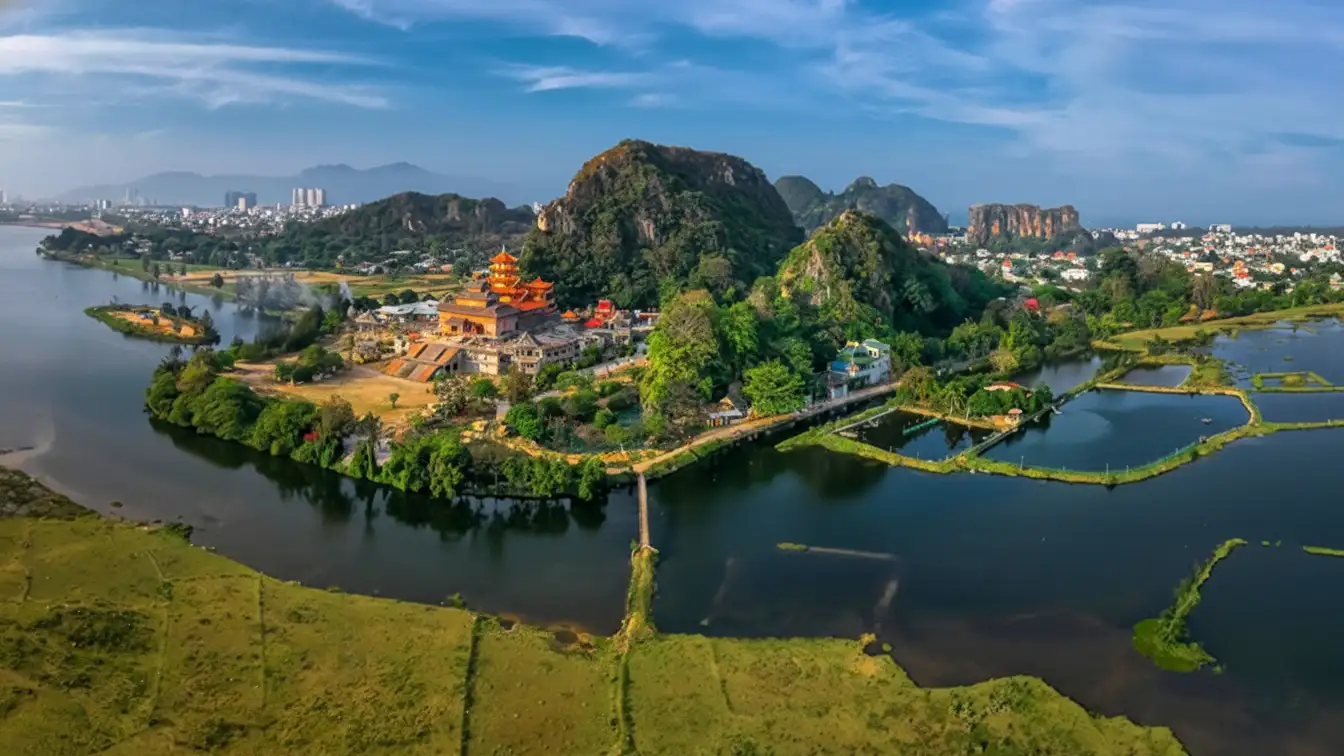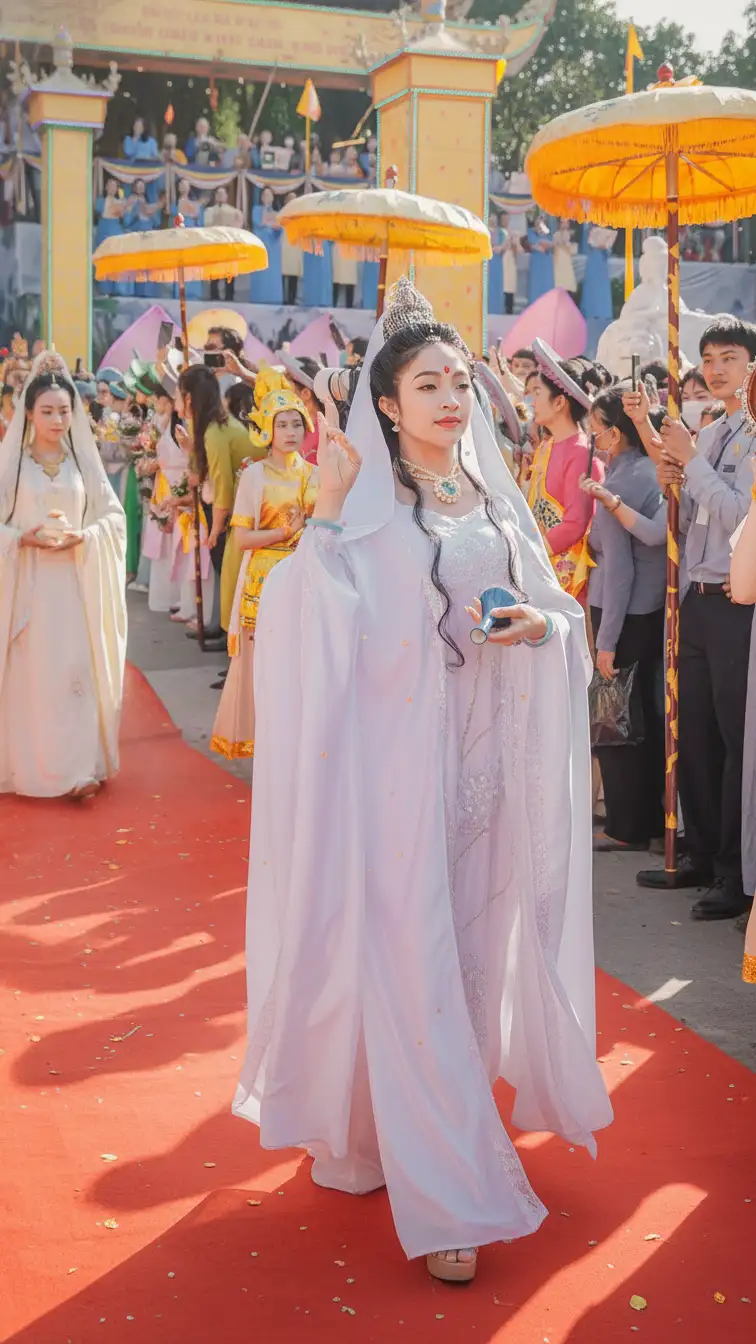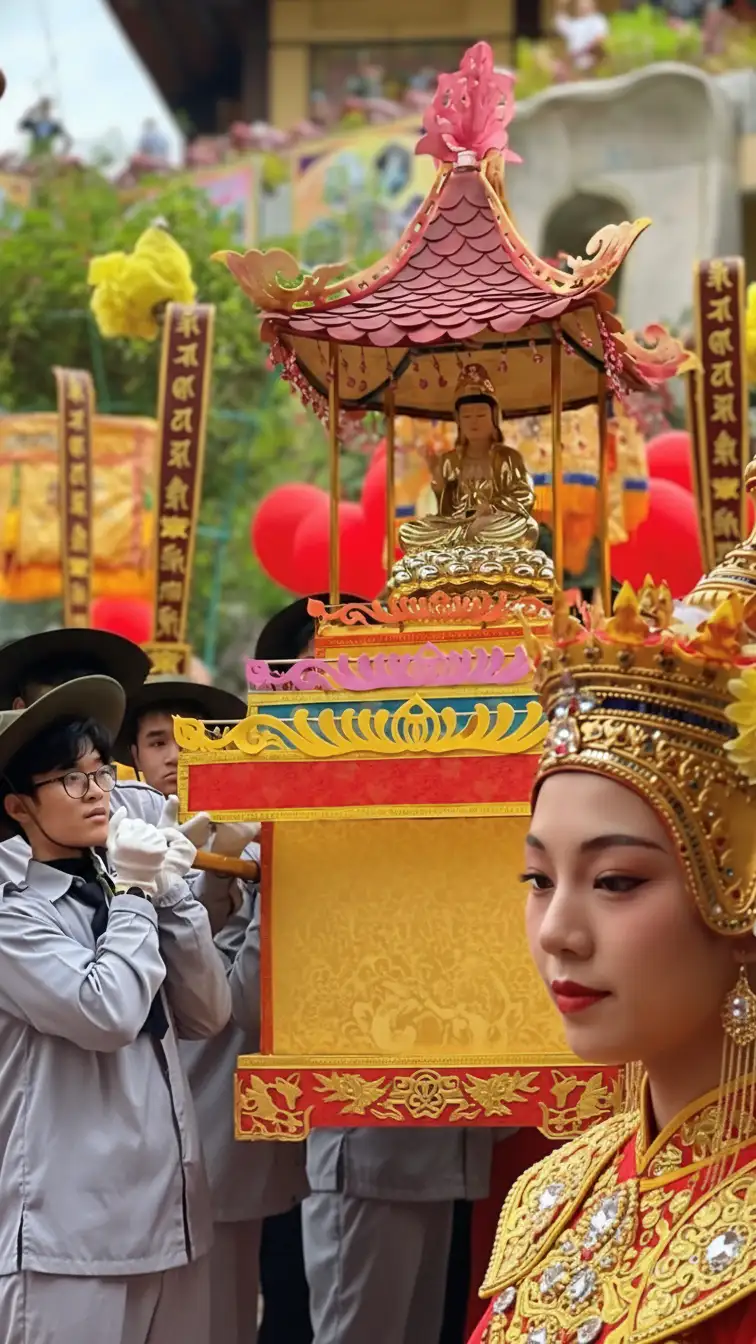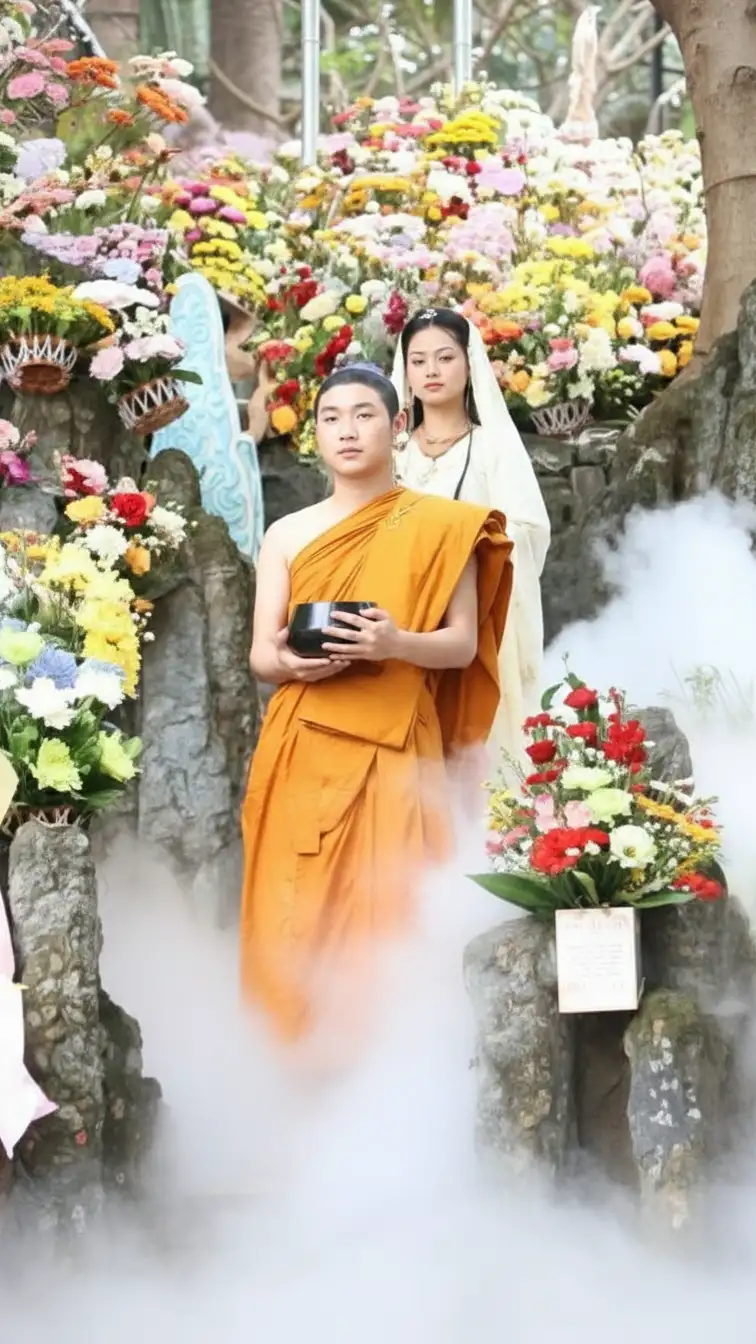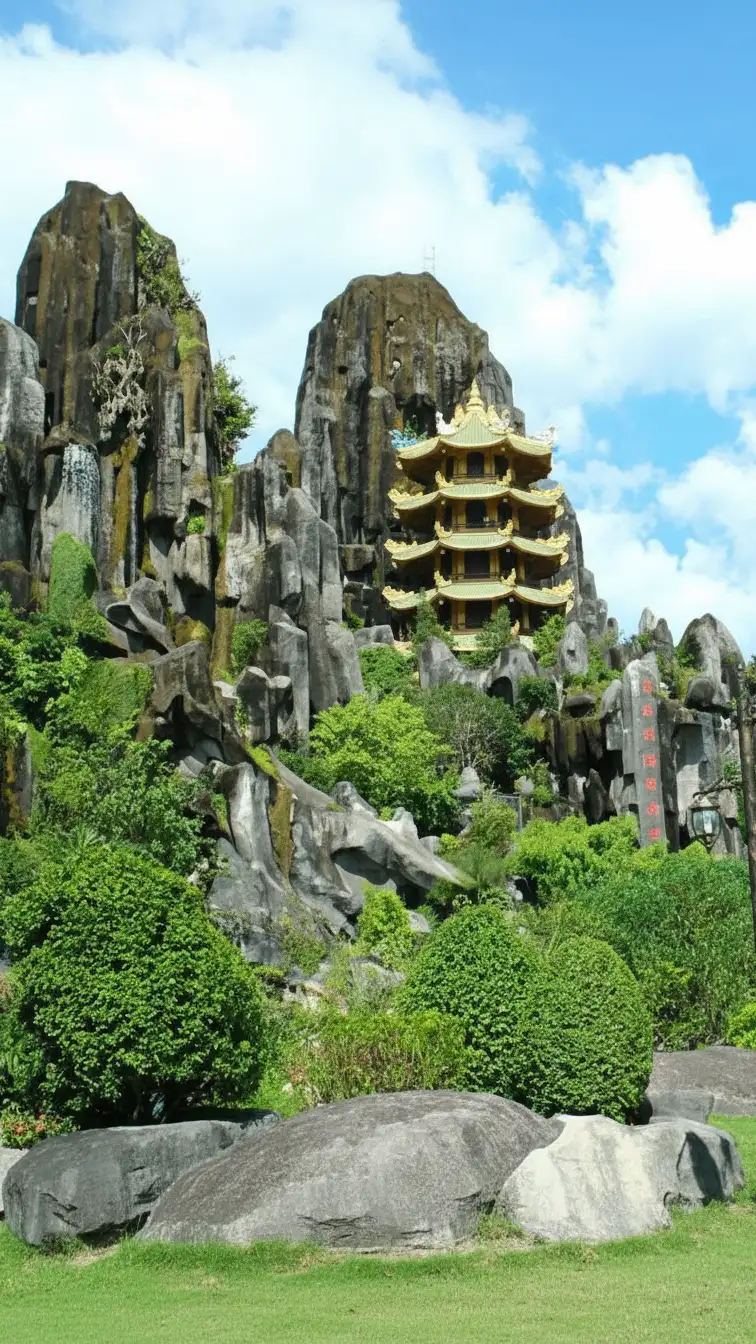Quick Facts
| Data Field (Title) | Content | Icon/Note |
|---|---|---|
| Official Vietnamese Name | Lễ hội Quan Thế Âm Ngũ Hành Sơn | Named after the Pagoda and the location: Marble Mountains (Ngũ Hành Sơn). |
| Location | Quan The Am Pagoda, Marble Mountains (Ngũ Hành Sơn), Da Nang City, Central Vietnam. | The central spiritual hub of Da Nang. |
| Date | Annual Event: From the 17th to the 19th day of the Second Lunar Month (typically March or early April in the solar calendar). | The 19th day is the main Veneration Ceremony. |
| Goddess Worshipped | Quan Thế Âm Bồ Tát (Avalokitesvara Bodhisattva). | The Buddhist deity embodying Infinite Compassion and Mercy. |
| Significance | Recognised as a National Intangible Cultural Heritage, promoting the core Buddhist values of peace and altruism. |
I. Overview: The Spirit of Mercy and Peace
The Bodhisattva of Compassion
The Quan The Am Festival is one of the largest and most significant Buddhist folk festivals in Vietnam. It is held annually at the foot of the picturesque Marble Mountains in Da Nang, centered around the Quan The Am Pagoda. The entire three-day event is dedicated to honoring Avalokitesvara Bodhisattva (known in Vietnamese as Quan Thế Âm), the spiritual figure who represents boundless compassion and salvation for the suffering.
The festival draws thousands of Buddhist pilgrims, monks, and international visitors who gather to pray for national peace, a prosperous year, good weather, and individual happiness and security.
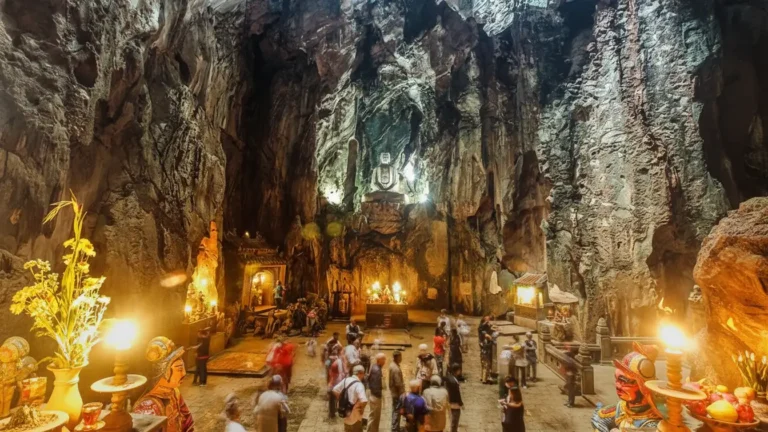
A Spiritual and Cultural Fusion
More than just a religious event, the festival is a profound showcase of the harmonious blend between Vietnamese folk beliefs and Buddhist tradition. It crystallizes the spiritual identity of the people of the Marble Mountains, a site itself renowned for its sacred caves and pagodas.
II. Key Rituals and Festival Activities
The festival is divided into solemn religious ceremonies and vibrant communal folk activities.
1. The Main Ceremonies (Lễ Hội)
Veneration Ceremony: Held on the morning of the 19th day, this is the main ritual where tens of thousands of participants gather to pray collectively for peace, prosperity, and the boundless compassion of the Bodhisattva.
Procession of Light (Đăng Lễ): A spectacular torch relay and palanquin procession held on the evening of the 18th. The light symbolizes the Buddha’s wisdom guiding all living beings toward enlightenment.
Statue Procession: A sacred statue of the Bodhisattva, often standing on a lotus throne, is carried in a solemn procession around the temple grounds or even on a boat along the nearby Cổ Cò River, symbolizing the spread of mercy.
Dharma Talks and Meditation: Monks and scholars host lectures and sessions focused on Buddhist philosophy, national values, and the teachings of compassion.
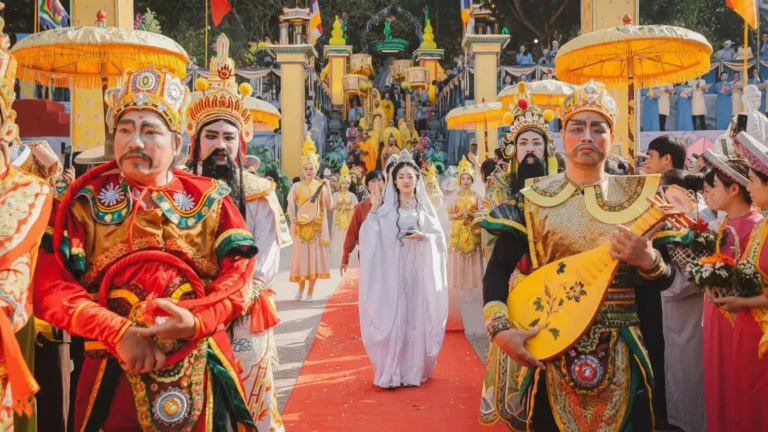
2. Cultural and Sporting Events
The festive part of the event is lively and steeped in traditional Vietnamese folk culture:
Traditional Arts: Performances of Tuồng (Vietnamese classical opera), folk singing, and cultural dances like the Lion and Dragon Dance are held on the temple grounds.
Art Exhibitions: Displays of calligraphy, ink wash paintings, and fine stone sculptures from the renowned nearby Non Nước Stone Carving Village.
Folk Games: Traditional communal activities such as tug-of-war and chess competitions are organized, fostering a sense of community.
Cooking Contests: Often featuring a highly anticipated Vegetarian Cooking Contest, emphasizing the Buddhist practice of compassion for all beings.
Boat Races: Similar to other coastal festivals, exciting traditional boat races are sometimes included in the schedule.
III. Visitor Information
| Guide Field | Details |
|---|---|
| Location Tip | The festival is held at Quan The Am Pagoda, located at the foot of the Marble Mountains. This area is easily accessible from both Da Nang city and Hoi An. |
| Dress Code | As a highly religious event, visitors are strongly advised to dress modestly (covering shoulders, chest, and knees) out of respect for the temple and the ceremonies. |
| Experience | This festival offers a deep dive into Vietnam's spiritual life. Expect large crowds, especially on the main day (19th), and a palpable atmosphere of devotion and collective goodwill. |
| Photography | The colorful processions, traditional costumes, and the serene backdrop of the Marble Mountains offer stunning visual contrasts. Be respectful when photographing rituals and monks. |
| Local Note | Da Nang's local tourism board ensures the festival maintains a clean, safe, and ethical atmosphere, often adhering to a strict "No" policy against begging, littering, and social misconduct. |
